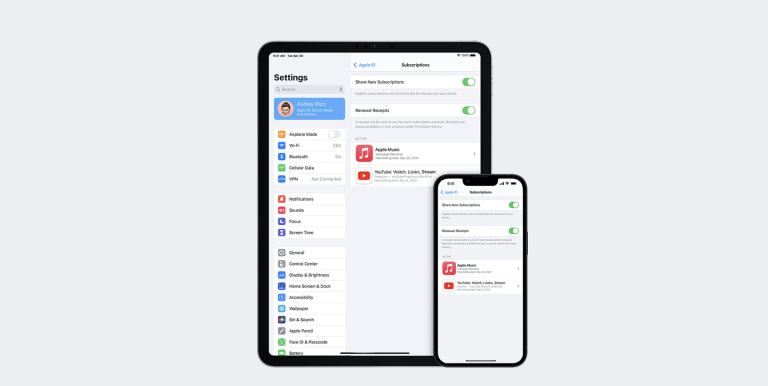
Introduction: Navigating iOS App Development and Monetization
In 2024, the realm of iOS app development continues to offer profitable opportunities, especially with in-app purchases and subscription models being at the forefront of app monetization strategies. For iOS app developers, mastering Apple’s billing system is essential to capitalize on these potential revenue streams.
This comprehensive guide delves into the critical aspects of Apple subscriptions and in-app purchases, providing valuable insights to enhance your app’s revenue. Before diving into the article, check out Apple’s official website of In-App Purchases and help center of Subscriptions.
Mastering In-App Purchase iOS and Subscription Management
Implementing In-App Purchase Functionality
In-app purchases have become a cornerstone for iOS app developers, allowing users to access premium content or features, and enriching the app experience as a result. Effective implementation involves several key steps:
Enabling In-App Purchases in Xcode: Start by configuring your app in Xcode to support in-app purchases. This setup includes creating product identifiers and managing transactions efficiently.
Utilizing StoreKit Framework: Apple’s Storekit Framework is important in facilitating seamless transactions between your app and the App Store. It covers functionalities for handling purchasing processes, receipt validation, and more.
Crafting Compelling Product Listings: Develop product listings with persuasive descriptions and visuals. Your goal is to attract users and convince them of the value of your in-app purchases.
Delivering Tangible Value: Ensure that your in-app purchases meaningfully enhance the user experience. Whether providing additional content, functionality, or ad-free experiences, the perceived value is key to conversion.
Setting Up and Managing Apple Subscriptions
Subscriptions can be a reliable revenue stream. Apple’s billing system offers various subscription options, such as auto-renewable subscriptions. Setting up and managing these effectively requires:
Choosing the Right Subscription Models: Align your subscription offerings with your app’s content and target audience. Offering trial periods can be an effective way to attract subscribers.
Defining Clear Billing Cycles: Transparency in billing cycles is essential. Clearly communicate the terms and duration of subscriptions to avoid user confusion and maintain trust.
Ensuring Continuous Value Delivery: Regularly update your app with fresh content or features to keep subscribers engaged and justify the ongoing subscription cost.
Streamlining Subscription Management: Develop a user-friendly system that allows subscribers to manage their subscriptions effortlessly. This includes handling upgrades, downgrades, and cancellations.
Adhering to App Store Guidelines and Maximizing Revenue
Compliance with App Store Policies
As an iOS app developer, adhering to Apple’s guidelines is crucial for maintaining a secure environment for users:
Reviewing App Store Guidelines: Familiarize yourself with Apple’s policies regarding in-app purchases, including content guidelines, pricing accuracy, and user privacy.
Ensuring Secure Payment Methods: Apple requires all in-app transactions to go through its payment processing system. Bypassing this system can lead to app rejection.
Prioritizing Data Privacy: Handle user data responsibly. Be transparent in your data collection and usage practices to maintain user trust.
Revenue Optimization Strategies
To maximize your app’s revenue, consider:
Localized Pricing: Tailor your pricing strategy to different regional markets. This approach can help attract a broader audience by considering local purchasing power.
Offering Discounts and Bundles: Entice users with special offers, discounts, or bundle deals. These promotions can encourage users to make purchases they might otherwise skip.
Utilizing Behavioral Prompts: Implement in-app prompts at strategic moments to encourage users to make purchases. Timing these prompts based on user behavior can increase their effectiveness.
Overcoming Challenges and Diversifying Pricing Strategies
Addressing Common Billing Challenges
Managing Apple subscriptions and in-app purchases can come with its set of challenges:
Minimizing Subscription Churn: Develop strategies to keep delivering value to your subscribers. Regular updates, exclusive content, and responsive customer service can help retain users.
Dealing with Technical Glitches: Ensure that your billing and transaction systems are regularly tested and updated to avoid any glitches that could affect user experience or revenue.
Implementing Diverse Pricing Models
A diverse pricing strategy can cater to a wider range of users:
Adopting Tiered Pricing: Offer different pricing tiers to accommodate users with varying budgets and needs. This approach can broaden your app’s appeal and increase revenue.
Creating Limited-Time Offers: Limited-time offers can create a sense of urgency, encouraging users to make purchases they might otherwise delay.
Conclusion: Excelling in iOS App Monetization
In the competitive world of iOS app development in 2024, effective monetization through Apple’s billing system is key to success. By leveraging in-app purchase functionalities and managing subscriptions wisely, you can maximize your app’s revenue potential. Stay adaptable, continuously refine your strategies, and balance user value with profitability to thrive in the app market.
For developers seeking expert assistance and comprehensive insights, considering the services of madduck Publishing can be a game-changing step. Their extensive industry experience and specialized knowledge can provide invaluable guidance, helping you make informed decisions tailored to your app’s specific goals and target audience. With madduck Publishing as a partner, you can navigate the complex landscape of app monetization with confidence and achieve remarkable results!
FAQ
What does Apple charge for in-app purchases?
Apple typically charges a 30% commission on in-app purchases. This rate may vary for subscription services and smaller developers under certain programs.
Do subscriptions count as in-app purchases?
Yes, subscriptions are a form of in-app purchases that provide users with ongoing access to content or services within an app.
Why does Apple need my billing info for a free app?
Apple requires billing information to manage potential future purchases within the app, including in-app purchases or subscriptions, even for apps that are free to download.
What is the difference between in-app purchase and subscription?
In-app purchases are one-time transactions for specific content or features within an app. In contrast, subscriptions offer recurring access to content or services for a periodic fee.
What is the difference between a bill and a subscription?
A bill is a one-time payment for a product or service. A subscription, however, involves regular payments for continued access to a product or service, often on a monthly or annual basis.